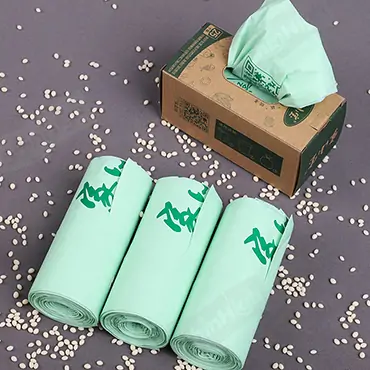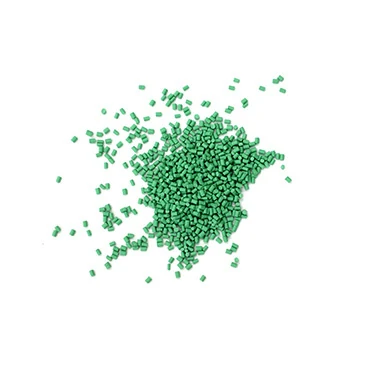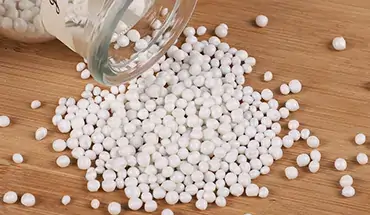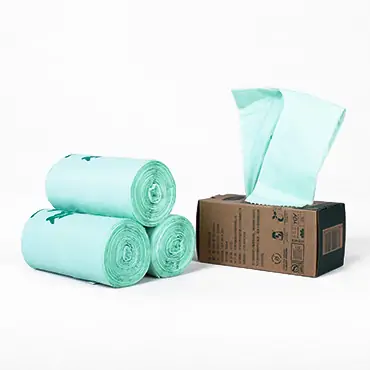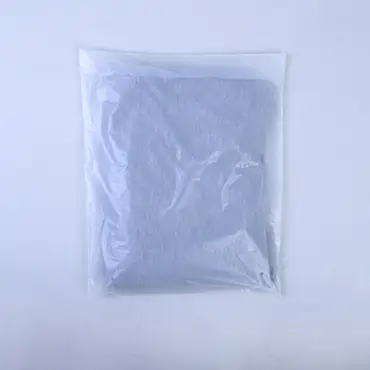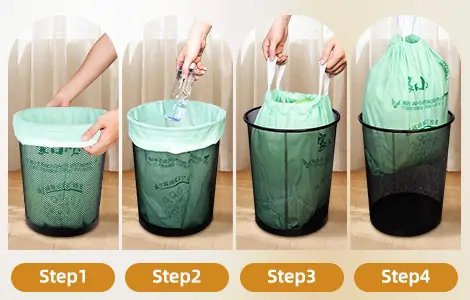 Trash bags are essential for daily life and industrial operations, and customization is becoming increasingly refined due to complex usage scenarios and growing environmental awareness. From heavy-duty construction waste disposal to convenient kitchen cleanup, from outdoor event sustainability to high hygiene standards in laboratories, custom trash bags must balance material properties, structural design, load capacity, application scenarios, and eco-certifications. This guide will provide an in-depth breakdown of how to customize trash bags for specific needs across three key dimensions: material, style, and load-bearing capacity of a garbage bag.
Trash bags are essential for daily life and industrial operations, and customization is becoming increasingly refined due to complex usage scenarios and growing environmental awareness. From heavy-duty construction waste disposal to convenient kitchen cleanup, from outdoor event sustainability to high hygiene standards in laboratories, custom trash bags must balance material properties, structural design, load capacity, application scenarios, and eco-certifications. This guide will provide an in-depth breakdown of how to customize trash bags for specific needs across three key dimensions: material, style, and load-bearing capacity of a garbage bag.
1. Material Selection: Balancing Puncture Resistance, Tear Strength, and Sustainability
The core performance of a trash bag depends on its material, with each type offering distinct advantages in puncture resistance, tear strength, flexibility, and environmental impact.
- High-Density Polyethylene (HDPE) – Lightweight & High Load Capacity
The Tight molecular structure of HDPE provides excellent puncture resistance and load-bearing capacity, but lower flexibility and tear strength. Blending with linear low-density polyethylene (LLDPE) improves tear resistance, expanding its applications.
HDPE trash bags are ideal for offices, kitchens, and bathrooms where sharp waste is minimal. For example, a 1.5-mil HDPE trash bag can hold 20 lbs of office paper. Its low cost (15-20% cheaper than LDPE) and compact packaging make it ideal for retail and household use.
- Low-Density Polyethylene (LDPE) – Superior Flexibility & Tear Resistance
The branched molecular chains of LDPE enhance flexibility and tear resistance, making it resistant to sharp objects. Higher cost (20-30% more than HDPE) and slightly lower load capacity, requiring increased thickness for reinforcement.
LDPE trash bags are the best choices for disposing of industrial waste and construction debris (e.g., nails, broken glass). A 4-mil LDPE bag can safely hold construction waste, with 30% better tear resistance than HDPE.
- Linear Low-Density Polyethylene (LLDPE) – The All-Rounder
Combines the puncture resistance of HDPE with the tear strength of LDPE at a mid-range cost. LLDPE is gradually replacing HDPE and LDPE in many applications due to its balanced performance.
For household waste collection and outdoor event management, LLDPE trash bags are the preferred choice. A 2-mil LLDPE bag handles both food scraps (puncture-resistant) and plastic bottles (tear-resistant) efficiently.
- Biodegradable Materials (PLA & PBAT) – The Eco-Friendly Choice
Biodegradable trash bags can break down into CO₂ and water in industrial composting within 45 days (meets ASTM D6400 (U.S.) and EN 13432 (Europe) standards).
Biodegradable trash bags are recommended for parks, festivals, and eco-sensitive venues.
Through sustained technological advancements, the production costs of PBAT & PLA have declined substantially, reaching parity with conventional petroleum-based plastic raw materials under large-scale customized procurement. For enterprises adhering to Environmental Policies, cost concerns no longer constitute a prohibitive barrier. In addition, through design adjustments, the practicality of biodegradable garbage bags has been significantly enhanced. Learn about custom biodegradable garbage bags immediately.
2. Structural Design: Optimizing Load Capacity, Sealing, and Usability
The structure of a trash bag impacts ease of use, leak prevention, and durability.
- Flat-Bottom Trash Bags – Maximum Load Support
The seamless bottom of flat-bottom bags distributes weight evenly, preventing leakage due to stress concentration.
Industrial bins and construction sites are suitable for using flat-bottom trash bags. A 56-gallon flat-bottom bag (90×110 cm) holds 40 lbs of debris—20% stronger than Star-Seal bags. (Flat-bottom trash bags require double-layer co-extrusion blow molding for uniform thickness.)
- Star-Seal Trash Bags – Leakproof Performance
The multi-layer heat-sealed bottom (120° fold angle) can prevent liquid leaks. This is why Star-Seal bags are suitable for use in kitchens and bathrooms. A 13-gallon star-seal bag (55×65 cm) resists oily waste 40% better than flat-bottom bags.
- Drawstring Trash Bags – Convenience-Focused
Drawstring trash bags feature one-handed operation with polyester drawstrings (15+ lb tensile strength). Homes and offices constitute primary application scenarios for drawstring trash bags. A 30-gallon drawstring bag (70×90 cm) speeds up disposal by 50%. (The drawstring of a trash bag must undergo a durability test, which requires the string to withstand 1,000 open/close cycles without breaking.)
- Self-Cinching Trash Bags – Hygienic Seal
The elastic closure of self-cinching bags can lock in odors and contaminants, making them critical for hospitals, labs, and food processing. A 30-gallon medical waste bag offers 60% better sealing than standard bags.
3. Size & Load Capacity: Matching Scenarios Precisely
Custom trash bags must align thickness, volume, and strength with their intended use.
- Thickness (Gauge) Guidelines
Light-Duty (1.0–1.5 mil) trash bag: For lightweight waste (paper, bottles). Low cost but weak puncture resistance.
Medium-Duty (1.6–2.0 mil) trash bag: Balances cost and performance for kitchen/industrial waste.
Heavy-Duty (2.0+ mil) trash bag: Handles construction debris, withstanding 50+ psi puncture force. - Capacity & Dimensions
Small (8–10 gal, 45×50 cm)trash bag: For bedrooms/cars (10-lb capacity).
Medium (13 gal, 55×65 cm)trash bag: Standard kitchen size (20-lb capacity).
Large (56 gal, 90×110 cm)trash bag: Industrial bins (40-lb capacity). - Load Optimization
Material Upgrades: HDPE offers 25% higher load capacity than LLDPE.
Structural Reinforcements: Drawstring bags with integrated handles increase limits from 15 to 25 lbs.
Thickness Enhancement: 6-mil construction bags support 50%+ beyond rated capacity for safety.
Eco-Certifications & Compliance: From Standards to Sustainability
Here are some global certifications for environmental and safety compliance to help you purchase high-quality trash bags.
- Compostability Certifications
ASTM D6400 (U.S.): Requires 45-day breakdown in industrial composting.
EN 13432 (Europe): Stricter—must fully decompose within 6 months without toxins. - Eco-Labeling Systems
Recycling Symbols: Must follow ASTM D7611 (e.g., “PE-HD” for HDPE).
Degradability Claims: Must specify conditions (e.g., industrial vs. marine degradation).
Carbon Footprint: Premium clients may demand <1.5 kg CO₂eq/kg lifecycle emissions.
Customization Process: From Concept to Delivery
1. Needs Assessment: Define usage, waste type, load needs, and eco-standards.
2. Material & Design: Select HDPE/LDPE/LLDPE/biodegradable + structure (flat/star-seal/drawstring).
3. Prototyping & Testing: Lab simulations (puncture/load tests) determine optimal specs.
4. Certification: Third-party verification (e.g., TÜV, SGS) for ASTM/FDA compliance.
5. Mass Production & QC: Automated film-blowing/printing/bag-making with 100% thickness checks + random load/seal tests.
As waste sorting policies and carbon-neutral goals advance, high-performance, bio-based materials will replace conventional plastics. For businesses, customization isn’t just functional—it’s a strategic advantage in sustainability and market leadership. By aligning materials, design, sizing, and certifications, custom trash bags can truly become a pillar of “green productivity.”
At ShinHigh Bio, you can also print brand patterns for your garbage bags. We are an ODM & OEM service provider specializing in the plastic bag field, possessing full-stack capabilities from material research and development to mass production and delivery. We rank within the TOP 100 in the sales of biodegradable bags on Amazon in the United States, with our company’s customer base accounting for over 30%. Looking forward to cooperating with you.

